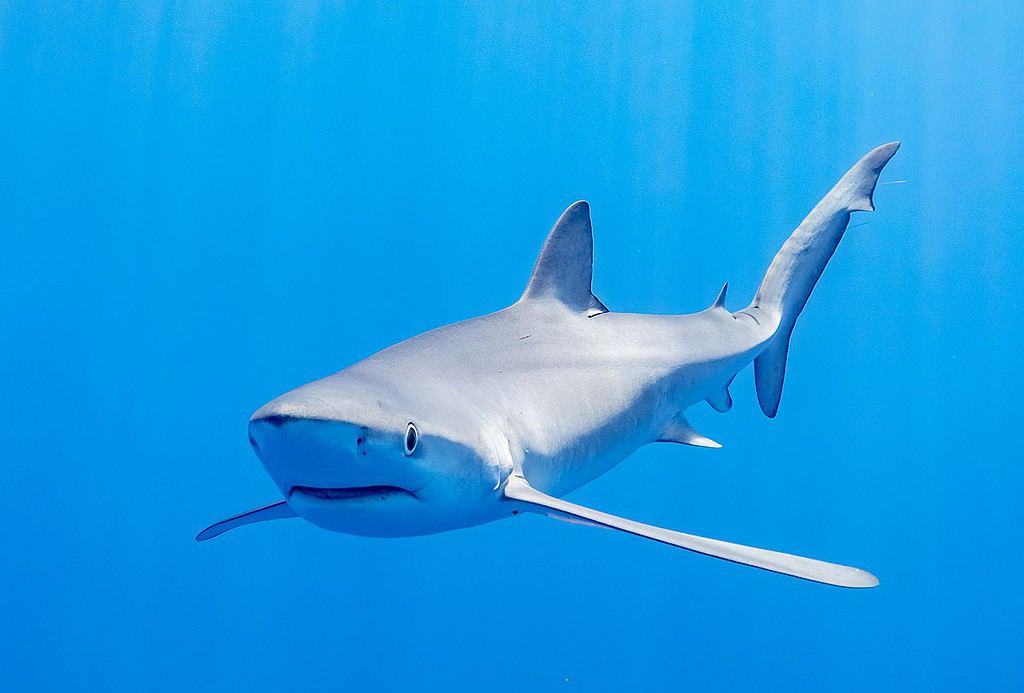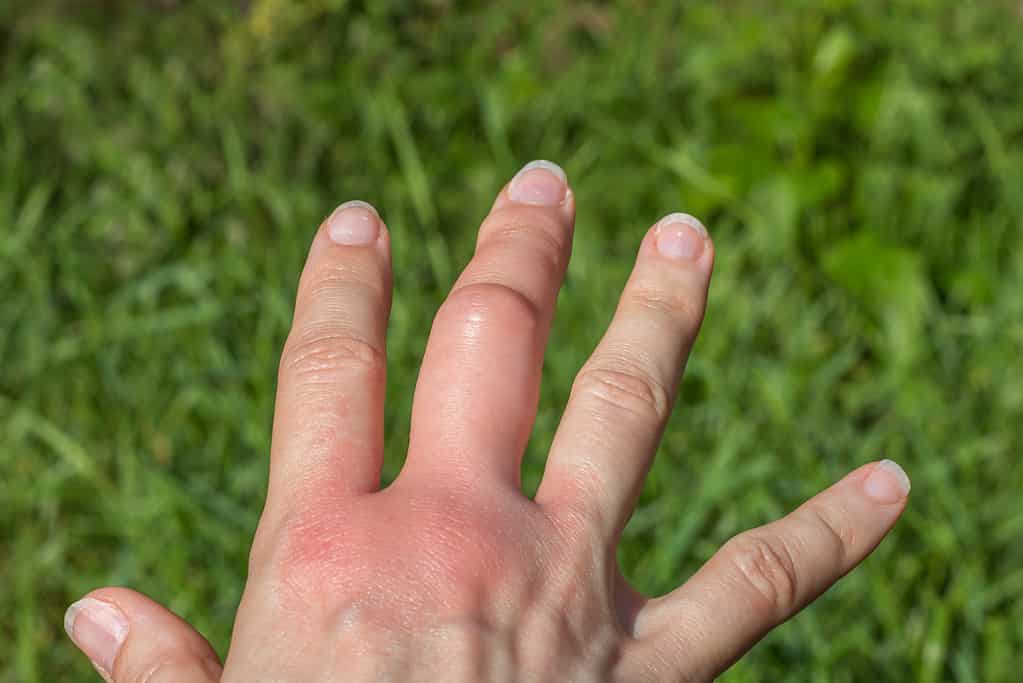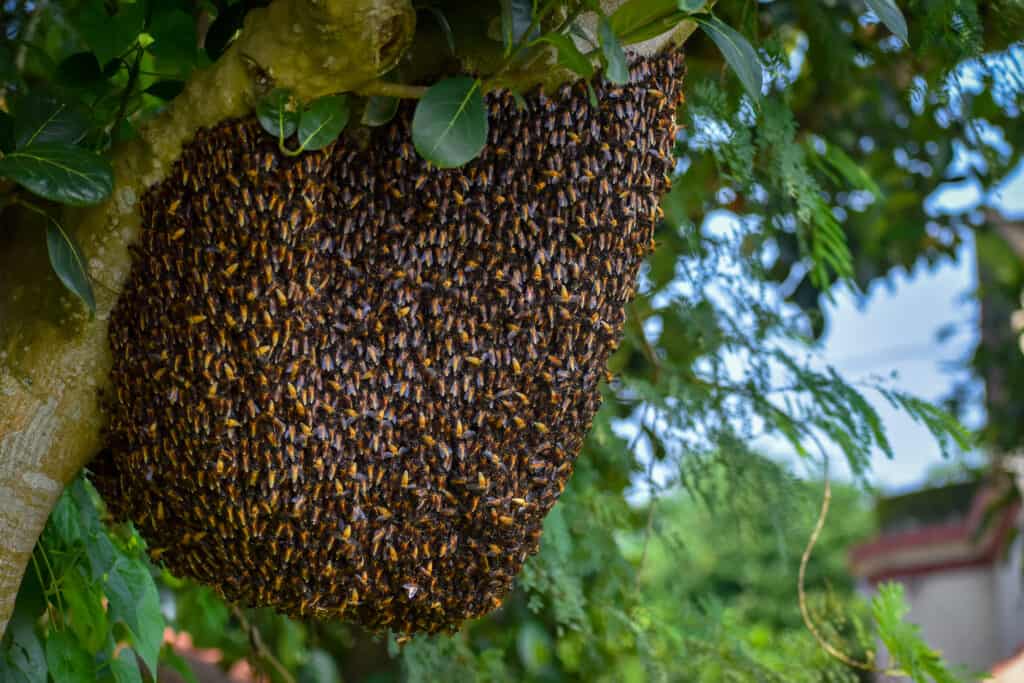Of all the dangerous animals in the world, sharks are the only ones with their own theme music! Ever since the 1975 release of Jaws, we all fear that ominous music: bum bump . . . bum bump . . . bum bum bum, bum bum bum bum . . .!” The movie scared us a little too much, though. It spoiled the ocean for generations of Americans who feared a shark lurking just off the coast of every beach. As it turns out, sharks are actually much less of a threat to your life than a lot of other creatures, including bees. Bees are much more likely to kill you than a shark! Read on for more details.
The Facts About Shark Attacks
How Many Attacks Are There?

Half the shark attacks in the world happen in the U.S., but only one American dies by shark each year.
©Diego Delso, CC BY-SA 4.0 – License
About half of all shark attacks in the world happen in the United States. Over the past 10 years, there have been 458 attacks near the shores of the U.S., with only eight of those being fatal. So, on average, sharks in the U.S. kill no more than one person a year. Compare that to cows and bulls, which kill 20 Americans a year! Shark attacks often happen because of “mistaken identity.” A human in the water might look to a shark like a sea otter or seal. When people splash around, they can appear to be an injured animal. Sharks might take a bite to sample and then leave when they find the person is not the prey they are expecting. Thus, shark attacks more often create survivable injuries than death.
Where Do Most Attacks Happen?
By far, most shark attacks happen in Florida, with 242 attacks in the past decade. But none of those were fatalities. The most fatalities happen in Hawaii, where four out of 71 attacks cost a person their life. Two fatal attacks over the past decade happened in California, and the other two happened in Massachusetts and Maine.

Half of all shark attacks in the U.S. happen in the warm waters of Florida.
©iStock.com/abadonian
What Shark Species Are Most Likely to Attack?
These species reportedly are responsible for most shark attacks on people:
- The great white shark may attack to “taste” an unfamiliar object or may mistake a person for a sea otter.
- Tiger sharks are curious and can be aggressive toward divers.
- The shortfin mako is the fastest shark. Humans hunt it to make shark fin soup. Some fishermen are injured by the shark when they pull it aboard.
- Oceanic whitetip sharks have been described as bold and unpredictable. They have been known to menace sinking ships and attack survivors.
- Bull sharks are responsible for a great many attacks. They are even able to swim some distance up freshwater rivers.
The Facts About Bee Attacks
How Many Attacks Are There?

Bee stings can cause a localized allergic reaction or can be fatal in severely allergic people.
©iStock.com/Inna Kozhina
Although bees are different from wasps and hornets, we group all these species together for the purposes of this article. In the decade between 2011-2021, 788 people died from bee, wasp, or hornet stings, or about 78 a year. Obviously, this number is far greater than the one person a year who dies from a shark attack.
This vastly higher number reflects the fact that bee stings can happen anywhere in the country, and about two million people are allergic to them. This doesn’t mean every allergic person will die from a sting, of course, but those who are most severely allergic can die if they do not receive timely medical care. The chance of negative outcomes also increases if a person is stung more than once, especially in a swarm attack that may inflict hundreds of stings.
Where Do Most Attacks Happen?

Hornets, wasps, and bees build nests near people.
©Klod/Shutterstock.com
According to the Centers for Disease Control, 80% of fatal bee stings occur in males. This might be a result of the fact that higher numbers of males work outdoors on yards, in the timber industry and agriculture, and engage in sports in the wilderness like hunting, mountain biking, and ATVing. Stinging insects are most aggressive from August through October. The greatest numbers of bees, wasps, and hornets live across the southern half of the United States, and hence, that is also where most of the bee attacks happen.
What Bee Species Are Most Likely to Attack?

Africanized bees like these are the most aggressive of all bee species.
©Nandalal Sarkar/Shutterstock.com
These are some of the most aggressive bee, wasp, and hornet species in the United States:
- Africanized honeybees (“killer bees”) are an extremely aggressive, territorial species that was developed by scientists in Brazil and accidentally escaped, making their way all the way to the United States.
- Honeybees are usually a fairly docile species, but they can sting as individuals or a swarm if they feel threatened. Their hives can be very large, with populations numbering in the thousands.
- Yellowjackets cause the most fatalities in the U.S. each year because they sting repeatedly and often attack in swarms.
- Wasps come in several species in the U.S. and are known to sting without provocation and cause allergic reactions.
What Animal is Most Likely to Cause Your Death?

Car collisions with deer are the most fatal animal encounters every year in the United States.
©iStock.com/frontpoint
If you were to die because of an animal in the United States, these are the most likely culprits:
- Deer kill 440 people a year due to car collisions.
- Bees, Wasps, and Hornets kill 78 people a year due to allergic reactions.
- Dogs kill 40 people a year. Rottweilers and pit bulls account for over 60% of fatalities.
- Cows and Bulls kill 20 people a year.
- Snakes kill five people a year. There are about 800 rattlesnake bites a year, but most are not fatal because of prompt medical care.
- Sharks kill on average one person a year.
Maybe all this makes you want to avoid nature altogether. If so, watch out when you feel hungry for a sweet snack . . . two people in the U.S. every year are killed by vending machines falling on them; twice as many as die from sharks!
The Moral to the Story

You’re twice as likely to be killed by this vending machine than by a shark.
©Ground Picture/Shutterstock.com
Before freaking out about real or imagined dangers, do a little research on the odds, take reasonable and appropriate precautions for the situation, and enjoy yourself. And that shark music? Maybe cue that up when you drive on country roads in deer country, walk around your buzzing flower garden, hear deep growling at the dog park, or pet a cow with a glint of murder in its eyes. And vending machines? Remember, junk food will kill you!
The photo featured at the top of this post is ©
Thank you for reading! Have some feedback for us? Contact the AZ Animals editorial team.






